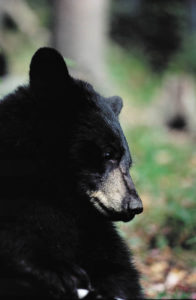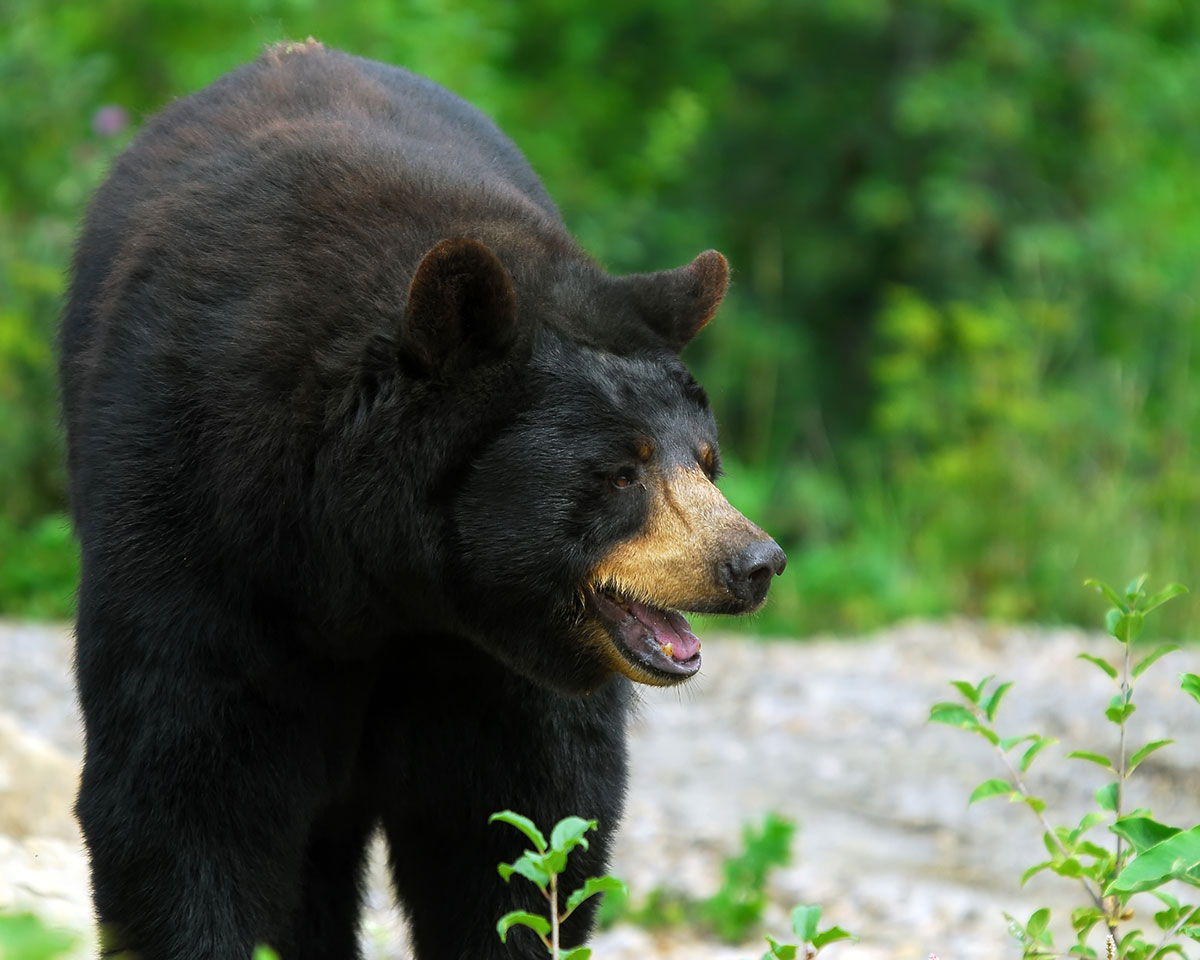The Great Smoky Mountains National Park is home to the black bear, a medium-sized bear that is widely distributed throughout North America. They are omnivores (meaning they eat both plants and animals) that like to live in heavily forested areas but will approach developed areas in search of food. This eventually became a problem for the Park.
A male black bear can weigh up to 550 pounds, with an average of about 250 pounds, although much larger black bears have been recorded. Black bears are dexterous, capable of manipulating jar tops and door handles. They are smart, strong and fast. They have been known to lift rocks weighing up to 325 pounds, and they can run up to 30 miles per hour.
 Black bears do take long winter sleeps. Black bears in the Smokies exhibit one trait that is unique, which is that they will den in standing hollow trees, high above the ground. During these long winter sleeps, female bears will give birth to cubs, which arriving weighing only 8 ounces!
Black bears do take long winter sleeps. Black bears in the Smokies exhibit one trait that is unique, which is that they will den in standing hollow trees, high above the ground. During these long winter sleeps, female bears will give birth to cubs, which arriving weighing only 8 ounces!
 Wildlife biologist Bill Stiver described black bears as “the symbol of the Smokies.” If you walk around Gatlinburg and visit some of the souvenir shops, you will see that this is definitely true, as t-shirts and other items featuring images of black bears will be found in every one (along with Sasquatch). Everyone who visits the Great Smoky Mountains hopes to see one…but not too close!
Wildlife biologist Bill Stiver described black bears as “the symbol of the Smokies.” If you walk around Gatlinburg and visit some of the souvenir shops, you will see that this is definitely true, as t-shirts and other items featuring images of black bears will be found in every one (along with Sasquatch). Everyone who visits the Great Smoky Mountains hopes to see one…but not too close!
The current black bear population in the Smoky Mountains is estimated at more than 1,500, which is the largest recorded since that information started being tracked. The increase in population has occurred through excellent wildlife management on the part of Park staff, law enforcement and education.
The way Park rangers deal with bears has shifted over the years. A proactive approach to managing bears has resulted in far fewer “nuisance bears” (approaching humans looking for food). As rules were established and Park visitors were educated, it became less common for unclean campsites or trash to attract bears.
In 1991, a new set of rules was established at the Chimneys Picnic Area of the Park. These included:
- Enforcing a strict evening closing time
- Shifting maintenance to evening hours to clean up trash and debris
- Installing bear-proof trash containers
- A new education program for visitors
Since the above rules were established, Park officials have reported tremendous improvements in the number of nuisance bears that have to be dealt with or relocated. Officials do everything they can to avoid putting a bear down. However, once a bear becomes dangerous, determined by its aggressiveness in invading human space, it can be put to sleep as a last resort.
The city of Gatlinburg has a full-time employee whose job it is prevent bears from entering the city. This employee is a Tennessee Wildlife Resources Agency (TWRA) officer whose salary is split between the city of Gatlinburg and the TWRA. This person makes sure that all local ordinances intended to keep bears out of Gatlinburg are followed. For example, animal resistant garbage containers are required to be used inside the city to minimize the attraction of bears.
If you visit the Smokies, please do not attempt to attract black bears. If you see one, do not approach it. If you camp, keep your campground clean. Leave no trash that will attract bears. If you are approached by a bear, back away slowly, and yell and make noises to scare it away.
The black bears of the Smokies are wonderful creatures that must be protected. We all need to do our part by following the rules discussed above. As long as we are careful and thoughtful, humans and black bears can get along just fine in the Great Smoky Mountains.
Sources
https://www.gatlinburgtn.gov/residents/black_bear_management_program/index.php
https://www.nps.gov/grsm/learn/nature/dff309-focusnps1.htm

